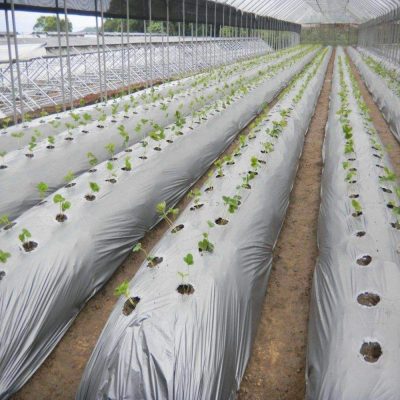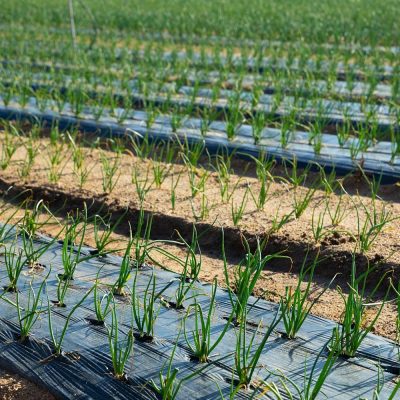Proper installation and maintenance of agriculture films are crucial to ensure maximum efficiency and effectiveness. Here are some important steps to follow for the installation and maintenance of agriculture films:
- Preparing the Site:
- Clear the area of any debris, rocks, or weeds that may interfere with the film’s installation or performance.
- Level the ground to ensure even contact between the film and the soil surface.
- Address any drainage issues to prevent water pooling or runoff.
- Film Installation:
- Start by measuring and cutting the film to the appropriate size, allowing for some overlap at the edges.
- Secure the film in place using ground staples, sandbags, or other suitable anchoring methods. Ensure the film is taut and properly stretched to avoid sagging.
- If using greenhouse films, ensure proper tensioning and attachment to the greenhouse structure to prevent air gaps and minimize heat loss.
- Irrigation and Ventilation:
- Install an appropriate irrigation system that works in conjunction with the agriculture film. Drip irrigation, for example, can be installed under mulch films to deliver water directly to the plant roots.
- Ensure proper ventilation to prevent excessive humidity buildup, especially in enclosed structures like greenhouses. Install vents or fans as needed to maintain airflow and control temperature.
- Regular Inspection and Maintenance:
- Regularly inspect the film for any damage, such as tears, punctures, or loose edges. Repair or replace damaged sections promptly to maintain the film’s effectiveness.
- Check for proper tensioning and re-adjust if necessary, especially after severe weather events or temperature fluctuations.
- Clean the film periodically to remove dust, debris, or organic matter that can affect light transmission or promote disease.
- If using mulch films, periodically monitor the condition of the mulch layer and adjust or replace as needed to maintain weed suppression and moisture control.
- Seasonal Considerations:
- Adjust the film as needed to accommodate changing seasons and weather conditions. This may involve removing or repositioning the film to allow for natural ventilation or adjusting the level of shade provided.
- In regions with harsh winters, consider removing or replacing films that are not designed for extended cold temperatures to prevent damage.
- Responsible Disposal:
- When removing or replacing agriculture films, follow proper disposal practices according to local regulations. Some films may be recyclable, while others may require appropriate disposal methods to minimize environmental impact.
It’s important to refer to manufacturer guidelines and recommendations specific to the type of agriculture film being used. Additionally, keeping detailed records of the installation and maintenance activities can help track the performance and lifespan of the films, allowing for timely replacements or adjustments to optimize their efficiency.








